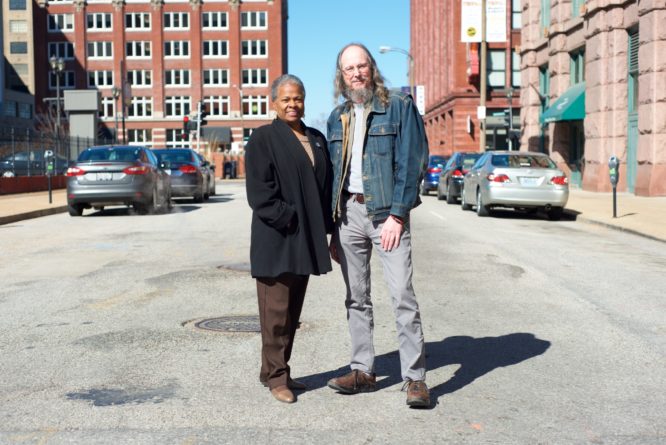Restoring Relations Through Community Policing
The expert testimony, research, scholarship, and lived experience collected by the Commission revealed the following:
- According to the U.S. Department of Justice, community policing is defined as “a philosophy that promotes organizational strategies that support the systematic use of partnerships and problem-solving techniques to proactively address the immediate conditions that give rise to public safety issues such as crime, social disorder, and fear of crime” (Community Oriented Policing Services, 2014).
- An integral part of the community policing movement is the development of police-community partnerships and an enhanced role for the public (Bayley, 1994; Grinc, 1994; Kerley & Benson, 2000; Maguire & Mastrofski, 2000).
- In 2013, police departments with a community policing component employed 88% of all local police officers, an increase from a decade earlier (Reaves, 2015). “The largest increase was among departments serving fewer than 10,000 residents, from 39% in 2003 to 61% in 2013” (Reaves, 2015). A majority of departments had problem-solving partnerships or written agreements with community groups, local agencies, or other local organizations (Reaves, 2015).
- A systematic review of 25 studies containing 65 independent assessments of community-oriented policing measures found that community policing strategies have the potential to positively impact citizen satisfaction and trust in the police (Gill et al., 2014). Citizen satisfaction with the police was evaluated in 23 comparisons, and community-oriented programs were found to be effective in increasing satisfaction in almost 80% of the cases (Gill et al., 2014).
These findings prompted the Commission to draft calls to action for enhanced community policing to foster greater trust, satisfaction, and partnership between the community and law enforcement.
To that end, the Commission issues the calls to action below.
Take Action
Build new relationships with law enforcement
Discover others ways to engage law enforcement officials
Support progress
Track movement towards positive change.
Suggested Reading List
Reaves, B. (2015). Local police departments, 2013: Personnel, policies, and practices. United States Department of Justice. Retrieved from:https://www.bjs.gov/content/pub/pdf/lpd13ppp.pdf
Community Oriented Policing Services. (2014). Community policing defined. United States Department of Justice. Retrieved from:https://www.cops.usdoj.gov/pdf/vets-to-cops/e030917193-CP-Defined.pdf
Citations
- Bayley, D. (1996). Police for the future. New York, NY: Oxford University Press.
- Community Oriented Policing Services. (2014). Community policing defined. United States Department of Justice. Retrieved from:https://www.cops.usdoj.gov/pdf/vets-to-cops/e030917193-CP-Defined.pdf
- Gill, C., Weisburd, D., Telep, C., Vitter, Z., & Bennett, T. (2014). Community-oriented policing to reduce crime, disorder and fear and increase satisfaction and legitimacy among citizens: A systematic review. Journal of Experimental Criminology, 10(4), 399-428. Retrieved from: https://link.springer.com/article/10.1007%2Fs11292-014-9210-y
- Grinc, R. (1994). Angels in marble: Problems in stimulating community involvement in community policing. Crime and Delinquency, 40(3), 437-68. Retrieved from: https://cad.sagepub.com/content/40/3/437.abstract
- Kerley, K. & Benson, M. (2000). Does community-oriented policing help build stronger communities?. Police Quarterly, 3(1), 46-69. Retrieved from:https://www.researchgate.net/publication/255658928_Does_Community-Oriented_Policing_Help_Build_Stronger_Communities
- Maguire, E. & Mastrofski, S. (2000). Patterns of community policing in the United States. Police Quarterly, 3(1), 4-45. Retrieved from:https://pqx.sagepub.com/content/3/1/4.abstract
- Reaves, B. (2015). Local police departments, 2013: Personnel, policies, and practices. United States Department of Justice. Retrieved from:https://www.bjs.gov/content/pub/pdf/lpd13ppp.pdf


